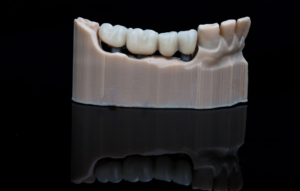Maintaining Oral Health with Crowns and Bridges: Tips and Tricks
Your smile is often the first thing people notice about you, and behind every healthy smile is a diligent oral care routine, sometimes supported by the artful work of dental crowns and bridges. Contrary to common belief, crown and bridge procedures aren’t just about aesthetics; they play a pivotal role in maintaining your overall oral health. In this comprehensive guide, we’ll unlock the best practices for keeping your dental crowns and bridges in pearly white condition.
What Are Dental Crowns and Bridges?
The Foundations of Your Smile
Dental crowns and bridges are restorative applications that dental professionals use to help repair and improve your smile’s form and function. Crowns are essentially caps placed over a damaged tooth to restore its shape, size, strength, and appearance. A bridge, on the other hand, is a set of connected crowns used to fill the gaps left by one or more missing teeth, bridging the area.
Material Matters
The materials used in crowns and bridges are diverse and continually advancing. Traditional crown materials include porcelain-fused-to-metal (PFM), all-ceramic, and gold alloys, each with specific advantages. Meanwhile, bridges can also be constructed from these materials, mirroring the natural look of teeth while ensuring durability.
Understanding the Difference
It’s essential to distinguish between the two restorations. While both are protective, bridges serve a different function as they are used to cover a space created by a missing tooth, allowing you to regain a full set of teeth.
When Are Crowns and Bridges Necessary?
Common Indications
A chipped or cracked tooth, a large filling, or serious tooth decay are all reasons why a dentist might recommend a dental crown. Crowns can hold together parts of a cracked tooth, protect a weak tooth, or restore a tooth that’s broken. Bridges, on the other hand, are used to fill in the gaps where teeth are missing, preventing the adverse effects of tooth loss, such as shifting and gum disease.
The Benefits of Restorative Care
Beyond the cosmetic benefits, crowns and bridges help restore your ability to speak and chew properly. By stabilizing surrounding teeth, they also maintain the shape of your face and prevent the remaining teeth from drifting out of position.
How to Maintain Dental Crowns and Bridges
Daily Care Tips
Sticking to a consistent oral hygiene regimen is critical. Brushing twice a day with a soft-bristle toothbrush and fluoridated toothpaste, flossing, and using an antimicrobial mouth rinse will keep your crowns and bridges free from plaque and bacteria.
Check-Ups Are Key
Regular dental check-ups every six months allow your dentist to assess the condition of your dental work, clean hard-to-reach areas, and provide professional advice on maintaining your crown or bridge.
Tips and Tricks for Long-Lasting Crowns and Bridges
Strategic Eating Habits
Avoid biting down on hard foods like ice and hard candy, or using your teeth to open packages, which can damage the dental work. Sticky foods can also dislodge a dental bridge, so it’s best to minimize their consumption.
Habits to Avoid
Tobacco products can lead to staining and gum disease, which can affect the longevity of your dental crowns and bridges. Similarly, clenching or grinding your teeth can cause wear and tear – consider using a mouthguard.
Your crowns and bridges are a valuable investment in your oral health and happiness. By following the advice outlined in this guide, you can ensure that your radiant smile remains a defining aspect of your persona. Proactive measures today can preserve your oral health for the future, so don’t wait for issues to arise.
